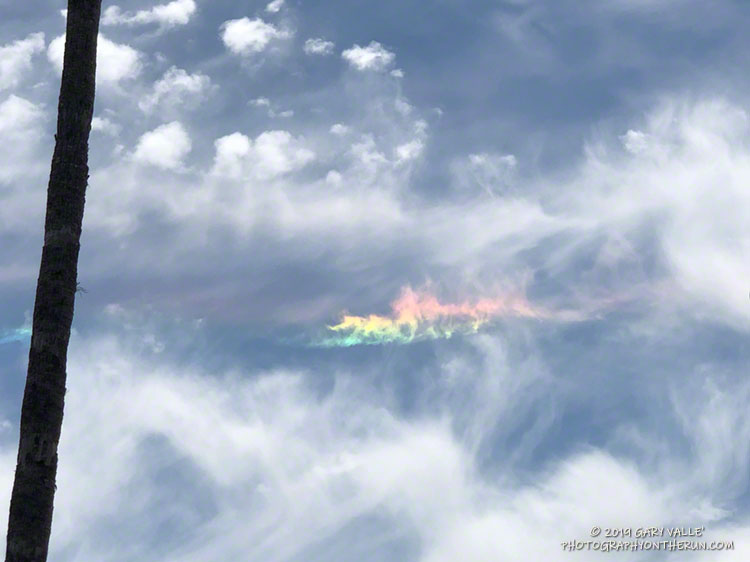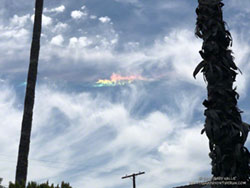
Colors in the sky other than blue and white quickly catch the eye. This afternoon, just before driving over to Ahmanson for a run, I noticed a peculiar band of vivid spectral colors mixed in with a patchwork of high altitude cirrus clouds.
The bright band of color was in the wrong place to be a sundog, but because of its association with the cirrus clouds was likely some type of halo. Ice halos are formed by the refraction and reflection of light by the facets of an ice crystal, such as those found in cirrus.
When I got back from the run I checked online and found Les Cowley’s Atmospheric Optics web site. This site provides a wealth of info about ice halos and other optical atmospheric phenomena. The web site even makes available software to simulate various halos.

The height of the sun above the horizon, the height of the band of color, and the prismatic sequence of the colors and their brightness all suggest the band is a segment of a circumhorizontal arc.
While not an everyday phenomenon, the circumhorizontal arc is more common at Los Angeles’ latitude than a higher latitude city such as Seattle or London. If 0 degrees is the horizon and 90 degrees is directly overhead, the circumhorizontal arc can only be seen when the sun is higher than about 58 degrees. When the photo above was taken, the sun was at 69 degrees.
The circumhorizontal arc is typically formed by hexagonal flat plate crystals oriented with their large flat faces horizontal. Rays of sunlight enter through one of the edge faces and then exit through the bottom face of the crystal.
Now that I know when and what to look for, I’ll be keeping an eye out for more ice halos.
